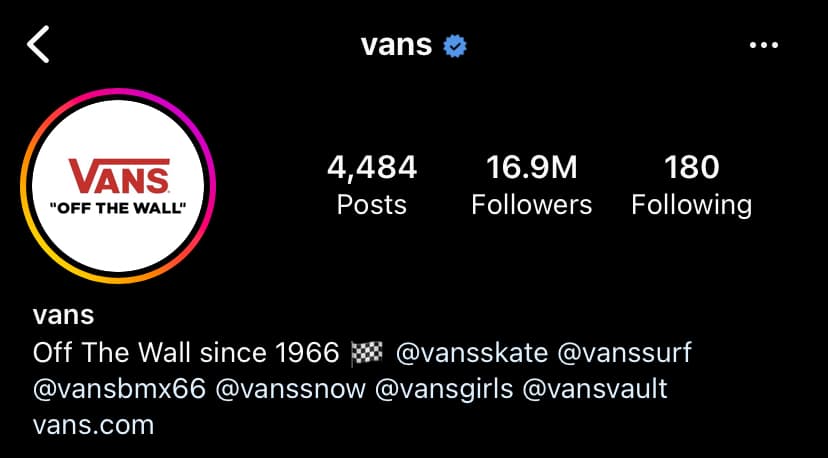How to Create the Perfect Content Marketing Campaign
From PR and paid advertising to cause marketing and word of mouth, many marketing strategy avenues are available for businesses to explore. But there’s one tactic that almost every industry currently favours: content marketing.
What is content marketing?
Content marketing is a strategic marketing approach that utilises videos, blogs, podcasts, guides, and other media to attract, engage, and retain a target audience. By creating content that has a unique and trustworthy voice, you can offer answers to your audience’s questions, build trust and credibility, and strengthen your reputation as a whole.
Content marketing doesn’t involve loud, boisterous pitches of a product, service or company; instead, it provides relevant, valuable, engaging, educational and/or entertaining resources. Research shows that 41% of people typically consume around 3-5 pieces of content before engaging with a sales representative.
Top tip: for Sales representatives using cold outreach as an email strategy, try including marketing content, i.e. blogs, guides, or infographics, within your email body.
Every content marketing campaign is going to differ slightly. As marketers, we all design content with different creative flares, ideas and structures. So if you’re creating a content marketing strategy as a B2C business whose focus is on fashion retail, your strategy won’t be the same as a marketer operating in the B2B SaaS market. Nevertheless, there are always several elements that will factor into any great content marketing campaign.
We’re going to explore seven key features that make the perfect content marketing campaign right now.
1. Set your goals: what problem are you solving for the customer?
What is your goal for creating a content marketing campaign? What do you hope to achieve? It can be difficult to know where to start, so consider a realistic time frame and the metrics you will use to determine whether or not your campaign was a success.

Source: CMI
The goals you have will inform other aspects of your campaign such as who your target audience is. It’s also helpful to outline, discuss and consider things like the resources you will need to invest in your content strategy, any help or data you might need from other departments, sales, for example, and how this campaign will work to achieve the wider company goals.
Common goals of a content marketing campaign are:
- Acquire more high-quality leads
- Get more website traffic
- Improve your social media metrics - this could mean the number of followers or the engagement rate of your posts
- Improve your ranking on SERPs (search engine results pages) through SEO (search engine optimisation)
- Increase revenue
- Gain influence as a thought leader
- Fostering brand loyalty
- Creating brand awareness
- Educating current and potential customers

Source: Hubspot
Your content marketing campaign doesn’t have to include just one goal - there can be a number of different goals based on each content piece or type. For example, your campaign might include creating an ebook and the goal of that ebook is to drive marketing qualified leads. You may also want to share it on social media so that means setting a goal to improve the engagement rates on your social media profile.
Your content marketing should work to add value to your customers and prospects. So ensure that the goals for your content marketing campaign are SMART (Specific, Measurable, Achievable, Relevant, and Time-bound).
2. Define your target audience: segmentation & buyer personas
Who is your content for? If you create content without first establishing your target audience, you will be wasting time, energy, and your marketing budget. It’s normal for businesses to have multiple audiences - you might have more than one type of customer or viewer and you can create a variety of content to suit your desired audience. Knowing your target audience means you can produce content for them that is appropriate, beneficial and that will make them convert.

Source: CMI
Market segmentation entails grouping different sets of customers based on their characteristics. These customer segments are created by conducting research; gathering and analysing demographic, geographic, psychographic and behavioural data. With this data, you can identify different types of audiences that exist and which are likely to benefit from what your company has to offer. Essentially, every piece of content that you create should be aimed at a particular market segment.
Take popular shoe brand, Vans. The self-titled 'misfits' have been around since the 1960s and originally targeted skateboarders. Vans have continually updated their content offering to appeal to different segments within their audience, and have created different Instagram accounts aimed at various target audiences, ranging from skaters to surfers to snowboarders.

Source: Vans
It’s then important for you to create a buyer persona. A buyer persona is a semi-fictional representation of who your perfect customer would be. Your buyer persona is based on the data you currently have on your existing customers as well as market research. Take a look at Hubspot’s tool to delve deeper into what a buyer persona is and how you can build one.
3. Content for the buyer’s journey stage
Once you’ve defined your target audience, you need to establish different content types that are relevant for each stage of the buyer’s journey. It’s not enough to just create blogs that offer definitions. Or videos that only entail short descriptions of your product. Those types of content are great, of course, but once your target prospects are aware of your business, they will need more and a wider variety of content.

Source: Pipeline
It’s typically known that there are five stages of the buyer’s journey: awareness, consideration, decision, retention, and advocacy:
- Awareness: the consumer becomes aware that they have a problem or issue that they need a solution to, for example a marketer who needs a software to display their progress and KPIs. They may have never heard of your brand before so it’s your job to raise their awareness; create an association between your brand and the needs of the customer. At this stage, your target audience requires pieces of content like blogs, ebooks, white papers, infographics, podcasts, videos, and industry reports.
- Consideration: here, the buyer has a better understanding of their problem or need and is searching for ways to solve it. They may have narrowed down their options and are conducting research: which brand offers great service? Has the most positive reviews? The best price? At this stage, it’s important that you prove your worth to your potential customers. You can do this with an up-to-date pricing guide, product demos, case studies, and webinars.
- Decision: at this stage, the buyer should have gained all the information they need to make an informed decision; to have narrowed down their list of options and be confident that they’re making the right choice. That means, on your part, offering proof that your product solves the problem it claims to. Ensure you have a USP that provides value and sets you apart from the competition. Here, you need to offer how-to tutorials, live product demos, competitor comparisons, customer reviews, testimonials, and free trials. It also doesn’t hurt to give discounts and offers at this stage. This stage is often when sales reps have the most interactions with potential customers and is a good opportunity to create a good relationship with the customer to entice them to choose you over your competitor.
Marketers who align their content efforts with the stages of the buyer’s journey yield 73% higher conversion rates
Source: Salted Stone Insights
- Retention: if you’ve got to this stage - give yourself a pat on the back. You’ve made the sale which means your marketing, so far, has been super successful. But even though you’ve made a sale which, of course, is the overall goal of business, the fun doesn’t stop there. It’s widely known that acquiring new customers is more costly than retaining current ones. So getting this stage of the buyer’s journey right is critical: content and communication-wise, ensure that you are consistent with your follow-up support calls & emails, onboarding emails & in-app messages, product-focused blogs, videos, etc. Your customer will also appreciate any relevant blog posts or videos that apply to their specific purchase and recommendations for add-on products.
- Advocacy: this is the final stage of the buyer’s journey. Your customers have got to this stage because you’ve done a great job at nurturing their needs throughout the previous stages. Advocacy means having customers who are happy to spread the word - to advocate for your brand and your products. Word of mouth is one of the most influential forms of marketing out there because people trust people more than they trust faceless brands. At this stage, you can make your customers feel valued by offering discounts, closed groups on social media, priority access to new product releases, referral schemes and so on.
4. SEO: Keyword research
The content that you create must be relevant and valuable to your audience, of course, but for them to gain value from it they must be able to access it in the first place. That’s where SEO keyword research comes in.
Relevant keywords that rank highly on Google (but have medium to low competition) will act as a skeleton from which you can develop your content around. There are a number of different tools you can use to conduct your keyword research - free keyword tools like Google Keyword Planner, for example. Enter this keyword planner and type in the main words that are associated with your business or, better yet, type in the main problems that your business solves. This will inform your keyword research.
Keyword research tools typically show you the average monthly searches for your keywords, the competition (i.e. in terms of ad placement: is the competition low, medium, or high), and then information on bidding prices. Then you have tools like SEMrush and Ahrefs. They offer more extensive insight and can be great to use if you want to create an in-depth search insights report. Ahrefs includes the keyword difficulty (how easy or difficult it is to rank for your keyword on a SERP), monthly search volume (MSV) of the keyword, global search volumes, associated parent topic, cost per click (CPC), and so on.
If you develop a search insights report, you can include all of this data within your spreadsheet along with a suggested H2 and H3 tag, a keyword-based meta description and a URL slug. All of these elements work towards enabling you to create structured, relevant content that is fully optimised for search engines and will help you keep up with latest SEO trends to gain maximum visibility.
Make sure you have an extensive list of keywords related to your products, services or brand. Continually update this list to include new keyword ideas so that you have a consistent stream of potential content.
Once you have a number of strong keywords that are relevant to your product and brand, you can start to create your content.
5. Create your topic cluster
Topic clusters are a collection of pieces of content that reside on your website. They’re all linked to a common, overarching subject known as a pillar page, which is an extensive piece of content that acts as an overview of a particular topic. All of your surrounding pieces that make up the cluster work together to give the reader a comprehensive insight into your subject of choice.
The focus of your pillar content is one broad keyword with a high search volume and, hopefully, low competition. Whereas your cluster content is focused on more specific keywords with smaller, more attainable search volumes.
A topic cluster is an SEO strategy that focuses on topics. They improve your site’s architecture, make it easier for SERPS to discover content and boost your visibility on search engines.
For example, say you are a SaaS company whose product helps marketers to improve their strategy. You will create a pillar page that focuses on the topic: Marketing Strategy, and then a number of smaller, more particularised pieces that delve into a specific aspect of the pillar content, e.g. remarketing, SWOT analysis, social media.
Structuring your content this way means your content creation is highly organised, well structured, and developed specifically to rank highly on SERPs.
6. Content calendar
A content calendar - also known as an editorial calendar - is a visual planning document that is used to outline and schedule your upcoming content pieces.
The type of content calendar you create will likely be different depending on the needs of your business or your team. For example, some businesses will design a calendar that outlines what you will create and publish on a weekly, monthly, quarterly or annual basis. Whilst others may not work on a date-to-date basis - they might just, as a rule, publish once per week and then work with a spreadsheet that’s made up of planned content (designed via your search insights report) and choose what they want to write about nearer the time.
Whichever way you decide to design your content calendar, it’s always a good idea to research different types and see which works best for you and your team. Most companies will plan, create, and publish a variety of content in their marketing campaigns, informative pieces ranging from blogs, infographics, and videos to podcasts, Ebooks, essential guides, and more.
7. Measure success: marketing analytics
The final element of any great content marketing campaign is assessing the success of your content. How did it measure up to your goals and expectations? Would you do anything differently? What performed well?
Once you have created and published your content you need to measure its success by looking at your analytics data. One of the best ways to display this type of data is on an analytics dashboard. With this, you can gain an at-a-glance understanding of vast amounts of data, allowing you to see exactly how you are performing. Here are some key metrics to measure your content’s performance:
- User behaviour: these metrics tell us how a user interacts with your page or website.
- Page views: the total number of pages viewed. Repeated views of a single page are counted.
- Total number of users: users who have initiated at least one session on your website during the date range you have selected.
- New users: the number of first-time users during the selected date range.
- Dwell time: average length of time spent on the particular page.
- Bounce rate: the percentage of single-page sessions in which there was no interaction with the page. A bounced session has a duration of 0 seconds.
- Engagement: how much your audience is connecting or interacting with you.
- Likes and shares: audience members indicating that they find your content interesting or valuable via their social media profiles.
- Comments: comments could be under your post on your website design or on your social media.
- Mentions: mentions of your content or website shared on social media or published within another brand’s article.
- Republications: your content getting shared via 3rd party sites.
Source: SEMrush
- SEO
- Organic traffic: users who found your site or content through a search engine.
- Backlinks: backlinks are links from one web page to another. Also known as “inbound links”, they’re super important when it comes to ranking highly on SERPs.
- Keyword ranking: your keyword ranking refers to your page’s position on a SERP for a particular word or query. They demonstrate how relevant your content is to the user’s search intent (from the perspective of the search engine).
By monitoring the performance of your content marketing campaign you will be able to alter it at regular intervals as you experiment and learn what works and what doesn't.
Conclusion
Delivering the right content to the right people, in the right place, and at the right time has the power to drive great traffic to your website and generate valuable leads. Remember that great content doesn’t just magically appear overnight. It takes time and consideration; analytical planning, meticulous research and creative construction.
Exploring the 5 key features mentioned above will help you to develop a content marketing campaign that is highly targeted, effective and drives results.
Track and visualise your KPIs on a real-time dashboard with Hurree. Start your free trial today and discover how to truly harness the power of analytics and transform your company reporting using cross-platform dashboards. If you have any questions then feel free to reach out to contact@hurree.co, we'd be happy to answer them!
Share this
You May Also Like
These Related Stories

What Are The Major Components of a Marketing Strategy?

7 Steps to Creating an Effective Content Marketing Strategy



